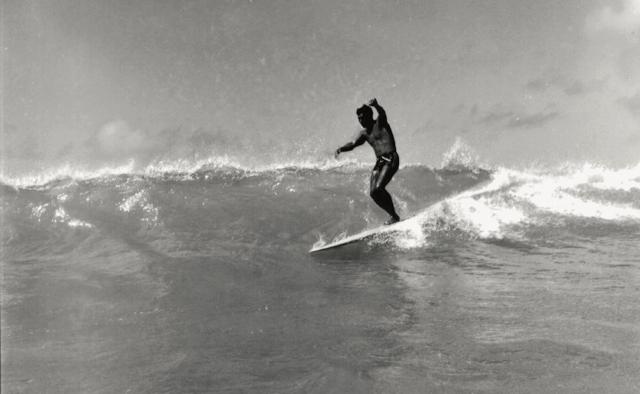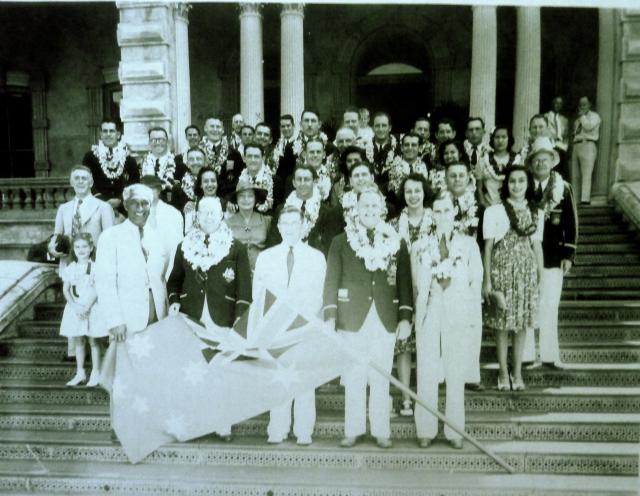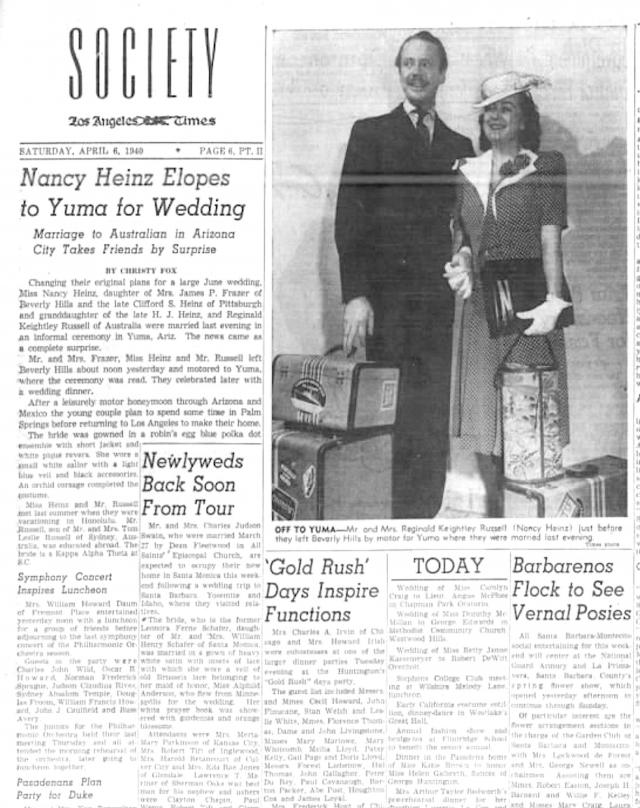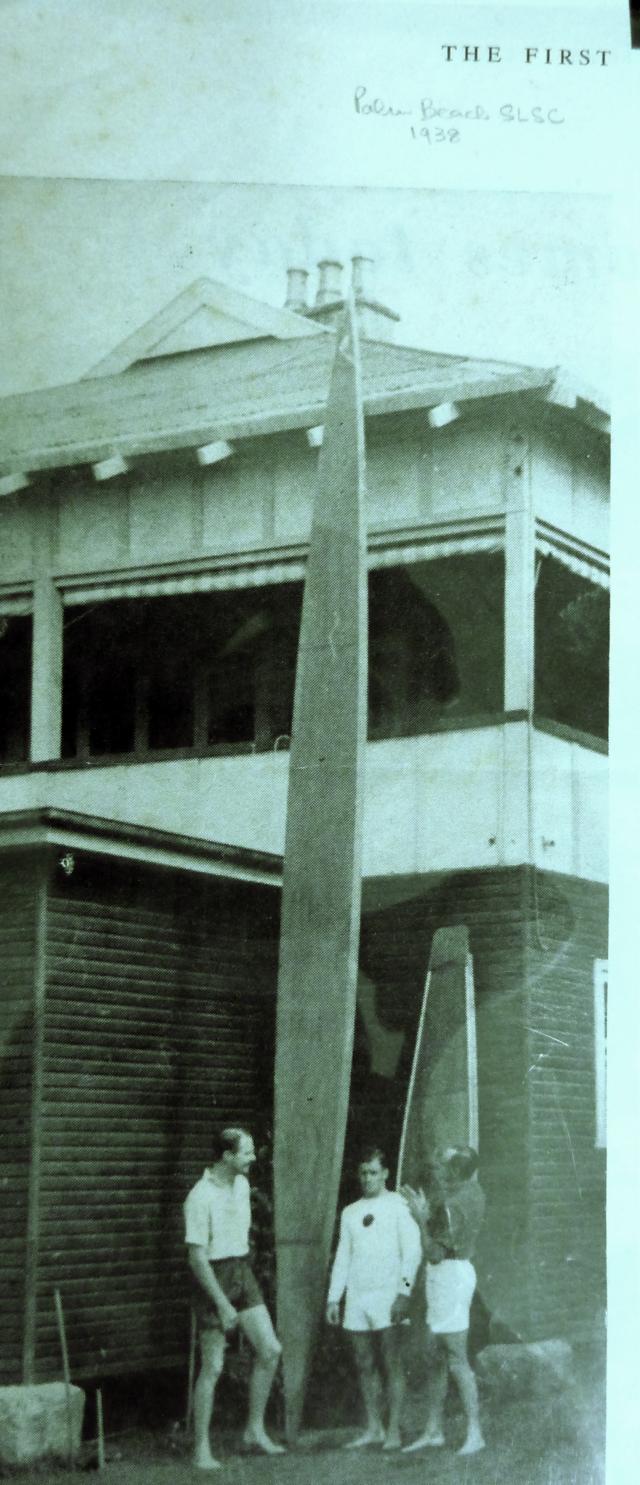I’m currently working on a project that has cast me back into the world of Australian surfing heroes of yesteryear, from a decade ago to a century ago, from all but forgotten to always remembered.
I thought I’d share with you some of the lesser known ones that I still remember over the next couple of winter weeks.
Blue Russell
By the 1930s there was a new generation of Australian surfers who had only been babies (or not even born) when the great Duke Kahanamoku gave his 1915 surfing demonstrations here. Perhaps the best of them was a handsome, ginger-haired fellow named Reginald Keightley “Blue” Russell, who divided his time between his mother’s apartment at Sydney’s Elizabeth Bay and the family weekender at Palm Beach, where he turned a downstairs work room into a shaping bay and began producing finely-crafted hollow boards.
Born in Sydney in 1914, Blue Russell first came to attention in the late 1920s when he borrowed redwoods from the clubhouse and taught himself to stunt-ride. A decade later Blue had developed into a strong, athletic young man, an outgoing, fun-loving fellow with a shock of red hair and a face full of freckles. Susceptible to sunburn, he was never seen in the surf without his felt sunhat tied under his chin, and after he started riding hollow boards, he pioneered the knee-paddling position and developed Australia’s first set of board bumps.
The Sydney Morning Herald’s social column, “Heard Here and There”, noted: “Quite the quaintest Palm Beach sight is that of Blue Russell speeding through the waves on his special surf-board, complete with a battered green felt hat clinging to his red hair.”
Blue was always in the social pages but he also had a serious side, particularly concerning building and riding surfboards, either for riding waves or paddling speed machines. He was on a speed machine one day in January 1938 when he rescued 15 swimmers from treacherous seas at Palm Beach.
In January 1939 the Honolulu Star-Bulletin newspaper issued a challenge to its counterpart in Sydney, the Daily Telegraph, to send a team of surfboard riders to compete against their own. The SLSA and the Telegraph immediately accepted. In fact the “Pacific Games” concept eventually encompassed a broad range of swimming and surfing skills over almost a fortnight of competition. In April, the final paddling selection trials were held at Narrabeen Lakes, with Blue Russell from Palm Beach, Lou Morath (Manly-Balmoral) and Dick Chapple (North Bondi) chosen as the three boardriders in the 22-strong team.
The team left Sydney on 23 June on the SS Monterey, arriving in Honolulu on 5 July, with four days to train before the event. During the voyage Blue was photographed doing his daily paddle training in the ship’s pool, the back of his board tied to a wall as he paddled against it. When they settled into the Waikiki lifestyle, however, Blue and his team-mates found there were many distractions. Writing a few years later, Hollywood columnist Viola McDonald noted: “Ginger Rogers gave me a special message yesterday for the Australian surf team which she met in Honolulu three years ago, taking part in the Pacific Surf Games of July, 1939. ‘We met on the beach, and they took me surfing, swimming, and boating,’ Ginger reminisced. “Never in my life have I met such charming and polite young men.’”
In town barely five minutes, our boys had hooked up with the hottest pinup girl in the world. But Blue was only warming up. He already had his eye on a beautiful young heiress who was shacked up in the Royal Hawaiian Hotel while the family luxury yacht sat on a mooring at the Ala Wai Harbour.
The Pacific Games got underway on Sunday 9 July with more than 15,000 people lining the beach at Makapuu to watch belt racing, surfboat and surfboard riding exhibitions. From then on the Australians were feted and mobbed wherever they appeared. After several more carnivals and swim meets around the island of Oahu, the Games concluded with an Australian-style surf carnival on Waikiki Beach which had to be abandoned when thousands of spectators mobbed the competitors on the narrow beach.
Although he had won only one individual event (and then only after the disqualification of the Hawaiian who was first across the line), Blue Russell’s overall results were enough for him to be declared the winner of the surfboard division, thus becoming Australia’s first international surfboard riding champion. But when the rest of the team sailed for home, Blue stayed on, having become romantically involved with the young woman at the Royal Hawaiian.
The object of Blue’s undivided attention was 18-year-old Nancy Heinz, a granddaughter of the late H.J. Heinz, one of America’s leading industrialists of the 19th century whose “57 different varieties” of beans had become one of the best-known food brands in the world. Blue signed on as crew on the Heinz yacht and back in Los Angeles the couple announced their engagement. Soon they had two young children and Blue had a flourishing career running his own gramophone recording company.
Although Blue’s surfing days were numbered, he is said to have become adept at riding the new “hot curl” solid board at Waikiki on visits in 1940 and 1941.










